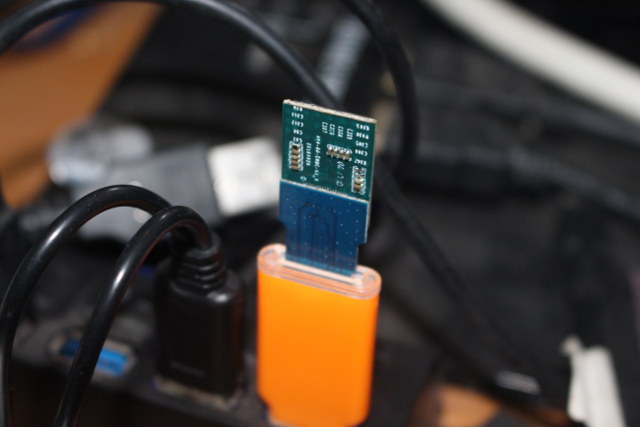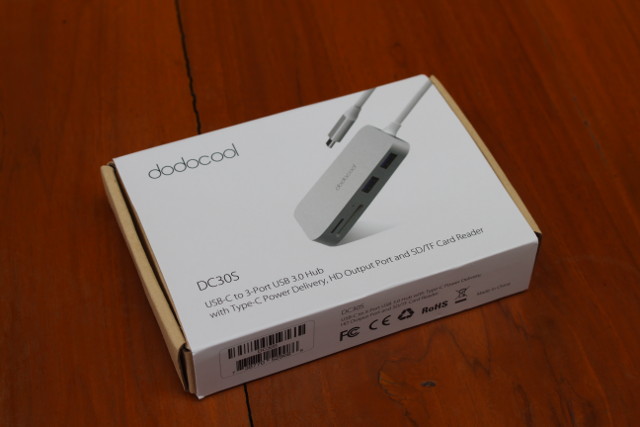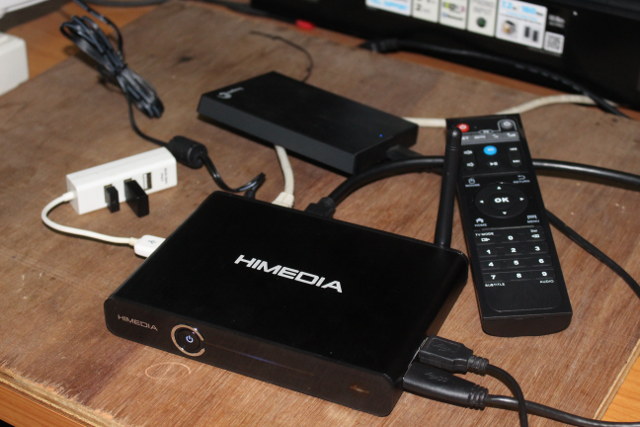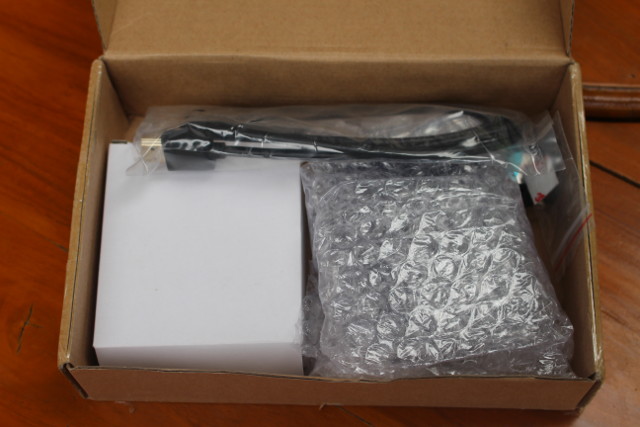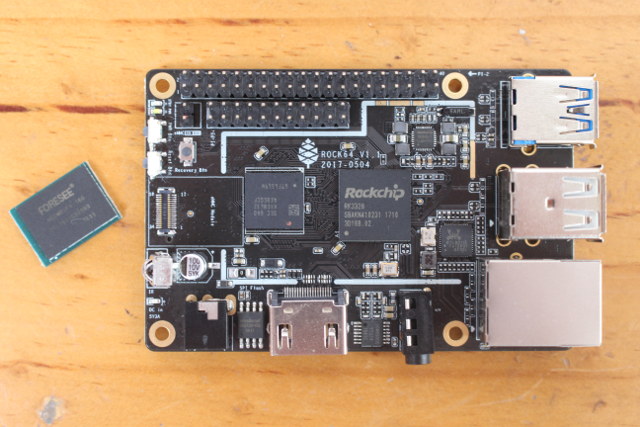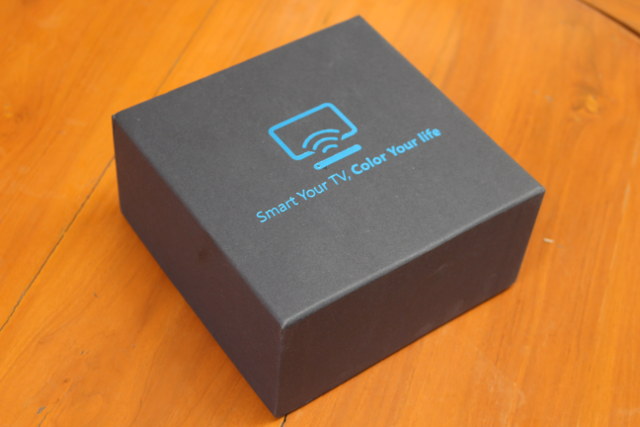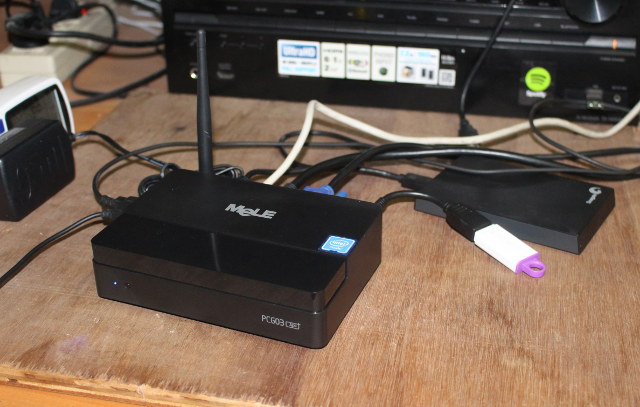Pine64 ROCK64 is the first maker board based on Rockchip RK3328 processor, and is potentially interesting for various applications including network storage thanks to USB 3.0 and Gigabit Ethernet, multimedia applications with 4K HDR video support, as well as other applications requiring I/Os. I’ve already tested Rock64 board with Android 7.1 operating system, so today I’ll report by finding and experience with Ubuntu 16.04.3 with MATE desktop. Selecting and Flashing a Linux Image You’ll find several operating systems in the Wiki, but you’ll also find more cutting edge images in ayufan’s github. But first let me explain some vocabulary used for Pine64 firmware files: Engineering version – Becomes with release build based on the stock build develop by Pine64 and the SoC vendor. It’s supposed to be more stable, but get less updates Community versions (currently managed via ayufan) are more frequently updates, and comes with more recent features. You’ll find […]
Checking Out Dodocool DC30S USB type C Hub with USB 3.0 Ports, Power Delivery, HDMI Output, and Card Reader
I reviewed Vorke Z3 Android mini PC last month, the first mini PC I’ve received with a USB type C port capable of handling video output too. I could see support for dual HDMI displays in the firmware, but at the time I did not have a USB type C hub with HDMI output. But Dodocool sent me their DC30C USB type C hub so I’ve finally been able to give a try. Dodocool DC30S Specifications USB Input – 13 cm USB 3.1 Type-C cable USB Outputs – 3x USB 3.0 type A ports up to 5 Gbps; 1x USB 3.1 Type-C PD charging port Video Output – HDMI port Storage – SD & Micro SD card reader Dodocool DC30S Unboxing First the package which gives basic info about the USB hub. The device comes with a warranty registration card, and a multi-language user manual. One side comes with the […]
HiMedia Q30 TV Box Review – Part 2: Android 7.0 Nougat Firmware
HiMedia Q30 is an Android Nougat TV box powered by Hisilicon Hi3798MV200 processor, a cost-down version of Hi3798C V200 processor with the same CPU, a lower-end Mali-450MP GPU, about the same media capabilities, and less I/Os. I’ve taken pictures of the device and board if the first part of the review entitled “HiMedia Q30 (Hisilicon Hi3798MV200) Android TV Box Review – Part 1: Unboxing and Teardown“, so today, I’ll report about my experience with the device while running Android 7.0. First Boot, Setup, and First Impressions I’ve connected a USB 3.0 hard drive to the single USB 3.0 port, and filled the two other USB 2.0 ports with a USB keyboard, and a USB hub with two RF dongles for an air mouse and a gamepad. I added Ethernet, HDMI, and power cable to start the device. A typical boot takes around 25 seconds to the Android launcher below. That’s […]
Le Potato Development Board Review – Part 1: Hardware and Accessories
Libre Computer launched AML-S905X-CC “Le Potato” board on Kickstarter last month, and since then there have been some updates such as worldwide shipping, so the board will now ship to most countries, not only in Europe or the US, and various designs of the case have been proposed. You can check the updates on Kickstarter for details. Libre Computer Le Potato Kit Unboxing The company also sent me a Le Potato board, but not only, as I received a complete kit… … similar to the $99 “2GB eMMC kit” reward on KS with a board with 2GB RAM, a 64GB eMMC flash module, a HDMI cable, and a 5V/2.5A power supply with on/off switch, but a different case, cooling fan, and corresponding rubber pad and screws. The case exposes all external ports, and has holes on top for the fan. The other side includes the micro SD slot, plenty of […]
Getting Started with MediaTek X20 Android Development Board
Thanks to CNX for helping me get a hand on the 96Boards compliant Mediatek X20 board that was generously donated by Seeed Studio. In this article, I will walk through the steps to get the board up and running and also compile Android from the source code. The current Android is version 6. Unboxing the Beast First Boot Up The board boots up from the eMMC, and the first time you boot up you will get Android screen as shown in Figure-9. This is the default Android image from the factory, which surprisingly looks like it was setup for a phone screen mode, which is not sufficient for a HDMI monitor. It would be better to install the images that are made available at Linaro website or build your own. See the other section to flash the board with different images. Switching to Fastboot Mode Flashing image files are done […]
ROCK64 Board Review – Part 1: eMMC Flash Module, Android 7.1 Firmware, Benchmarks, and Kodi
ROCK64 is the second ARM Linux development board by Pine64 that is based on Rockchip RK3328 processor, instead of Allwinner 64 for Pine A64 board, and while both processors comes with four Cortex A53 cores, the Rockchip processor offers a faster GPU, 4K @ 60 Hz video support, as well as USB 3.0 support. I’ve got a sample with an eMMC flash module, and I’m going to test it first with Android 7.1, since those were the only firmware images currently available on the Wiki, but Linux will be available before the board ships publicly at the end of July. Rock64 Linux Ports Status There are now at least three Linux ports in progress: ayufan’s Debian Jessie and Ubuntu Xenial images which are now in pre-release, but should officially be released next week. Arch Linux ARM with no pre-built Rock64 images yet Fedora 25 minimal Image The Yocto Project support […]
Bqeel MVR9 TV Box Review – Part 1: Specifications, Unboxing and Teardown
All Rockchip RK3328 based 4K TV boxes I’ve seen so far come with Fast Ethernet, not Gigabit Ethernet, with the exclusion of Rock64, which is not a TV box, but a development board. But Nagrace sent me Bqeel MVR9 box that comes with Gigabit Ethernet, in order to write a review. I’ll start by having a look at the hardware first, before experimenting with the firmware in several weeks. Bqeel MVR9 Specifications SoC – Rockchip RK3328 quad core Cortex A53 processor with ARM Mali-450MP2 GPU System Memory – 2 GB DDR4 @ 1066 MHz Storage – 16 GB eMMC flash + micro SD card slot Video Output – HDMI 2.0a up to 4K @ 60 Hz with HDR10 and HLG support, 3.5mm AV port (composite video) Video Codec – 4K VP9, H.265 and H.264, 1080p VC-1, MPEG-1/2/4, VP6/8 Audio Output – Via HDMI, and AV (stereo audio) ports; optical S/PDIF […]
Review of MeLE PCG03 Apo Fanless 4K Mini PC – Part 2: Windows 10, Benchmarks, and Kodi
MeLE PCG03 Apo is an update to MeLE PCG03 mini PC, and one of the rare Apollo Lake mini PCs to be both fanless, and support HDMI 2.0 output. I’ve already checked out the hardware design in “MeLE PCG03 Apo Fanless Apollo Lake mini PC Review – Part 1: Unboxing and Teardown“, so in the second part of the review I tested Windows 10, focusing on HDMI 2.0 features, audio pass-through in Kodi, and performance and stability tests to see how well it compared to similar actively cooled mini PCs such as Voyo V1 VMac mini. MeLE PCG03 Apo Setup and System Information I connected a USB 3.0 drive to one of the USB 3.0 ports, USB keyboard and mouse, and RF dongle for a wireless gamepad to the other USB 2.0/3.0 ports, as well as USB type C to micro USB adapter itself connected to a micro USB OTG […]


